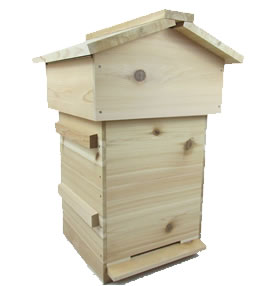Understanding the Meaning of Beehive: A Comprehensive Guide
A beehive, in its simplest sense, refers to a structured dwelling or habitat constructed by honeybees to house their colony. However, the meaning and significance of a beehive extend far beyond its physical structure, encompassing various aspects of bee biology, behavior, and cultural significance.
The Physical Structure of a Beehive
Physically, a beehive is a man-made or natural structure designed to provide shelter, protection, and a conducive environment for honeybees to live, work, and thrive. It typically consists of several components, including hive boxes, frames, honeycomb, bottom boards, inner covers, and outer covers, each serving specific functions to support the bee colony's needs.
The Biological Significance of a Beehive
Biologically, a beehive serves as the central hub where honeybees carry out essential activities vital for colony survival and growth. These activities include brood rearing, food storage, temperature regulation, communication, defense, and reproduction. The hive's structure and organization play a crucial role in facilitating these activities and maintaining the overall health and productivity of the bee colony.
The Cultural and Symbolic Meaning of a Beehive
Beyond its biological function, the beehive holds significant cultural and symbolic meaning in human societies throughout history. In many cultures, bees and beehives symbolize industriousness, cooperation, community, and abundance. The intricate social organization and collective effort exhibited by honeybees within the hive have inspired admiration and reverence among humans for centuries, leading to the adoption of bees and beehives as symbols of unity, diligence, and prosperity.
The Importance of Beehives in Beekeeping
In beekeeping, beehives are the focal point of bee management and honey production. Beekeepers utilize various hive designs and management techniques to promote bee health, maximize honey production, and sustainably manage bee populations. Beehives serve as the primary tool for beekeepers to interact with and care for honeybee colonies, making them indispensable assets in the practice of beekeeping.
Conclusion
In conclusion, the meaning of a beehive transcends its physical structure to encompass biological, cultural, and symbolic dimensions. As a vital habitat for honeybees, beehives play a central role in supporting bee colonies' needs and sustaining their populations. Moreover, beehives hold cultural and symbolic significance as symbols of industriousness, cooperation, and abundance, inspiring admiration and reverence among humans throughout history.
Whether viewed as a biological marvel, a cultural symbol, or a practical tool for honey production, the beehive remains an integral part of human society and the natural world, reflecting the timeless bond between humans and bees and the enduring legacy of beekeeping.



